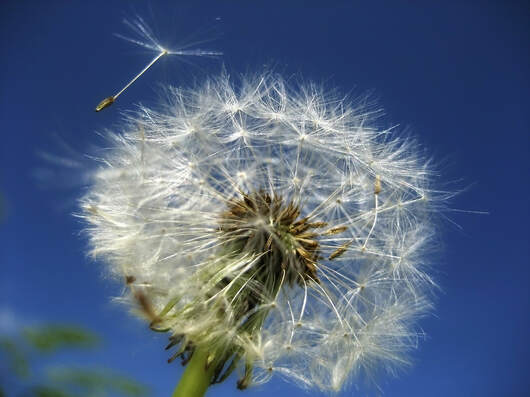Since my studies in Chinese Medicine began, I have come to know of how the Chinese honor the Peony. It was referred to by Confucius (551-479 BCE), was often the subject of art in the Tang dynasty (618-907 CE) and even declared the national flower of China during the Qing dynasty, the last imperial government of China till 1912. In Chinese it is called Fu Gui Hua, "flower of riches and honor." Peonies are naturally occurring in temperate and cold areas of the northern hemisphere, from Morocco to Japan to North America. There is a Greek myth of Peony, where the God of Medicine, Aesclepius, got jealous of his student, Paeon, and he was saved from Aesclepius' attack by Zeus who transformed him into a flower - the Peony.
There are tree Peonies, herbaceous Peonies and hybrids that have leaves like the tree but are herbaceous. In the Chinese Medicine itself, we use 3 different species of Peony: Paeonia suffruticosa, Paeonia lactiflora and Paeonia veitchii. Interestingly, the part of the plant that it used as medicine is not the flower. The part of Paeonia suffriticosa, which is the tree, that is used is the cortex or bark of the tree, Mu Dan Pi. It is used to cool the blood and clear heat, as in the case of fevers. It also moves blood when there has been trauma, lowers blood pressure and inflammation. Paeonia lactiflora, the herbaceous Peony, provides its radix or root as medicine in the form of Chi Shao or Bai Shao. Chi Shao is the root that is still red, which helps move blood and relieve pain from trauma or menses. Bai Shao is the white root, which tonifies the blood, calms the liver, relieves tension and adjusts Ying Qi (Nutritive Qi) as well as Wei Qi (Defensive Qi). One of my Chinese herbal teachers called Bai Shao the "White Fairy Mother."
I grow Peonies in my garden, both the tree and herbaceous ones. They are special plants that don't like to be moved, they find a spot and they root there till they die. I observe them throughout the year. After they flower in Spring (April to early June), the tree has already flowered now and the herbaceous form is flowering soon, the energy of the plants goes inward and dies back its external manifestation in autumn. This does not mean the plant is not working, the power of the Yin (autumn and winter being Yin times of the year) is being generated in the root of the plant. This I believe is why the root of Bai Shao are so powerful to nourish the Yin and Blood in our bodies. Right now, those who react to the seasonal pollen that is currently in full emission, that includes myself, will be thankful to Mu Dan Pi for providing the cooling and calming of the mucous membranes in the eyes and nasal passages. The bark of the Peony tree is hardy yet gentle, providing the soothing coolness and protection of autumn-winter in the searing heat from growth of spring-summer. It is an herb of balance; sinking when there is strong rising action, calming when there is over-excitement.
Chinese Herbal Medicine uses herbs mostly as formulae, almost never one herb alone, as the synergy of the combined herbs counteract the overexertion of another. One could say they operate as a team, supporting one another and balancing the forces of the other. Each herbal formula is prepared specially for each individual person, paying attention to causes of the imbalance and not just on symptoms. If you are interested in using Herbal Medicine, discuss it with your practitioner so that s/he can help you understand your imbalances and how these amazing plants can aid you in your health.
Images Peony by Elaine


 RSS Feed
RSS Feed